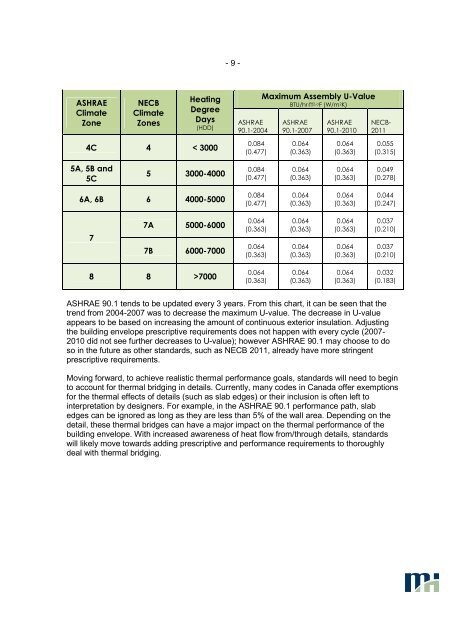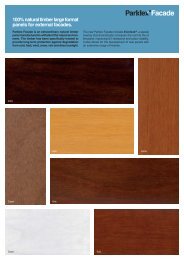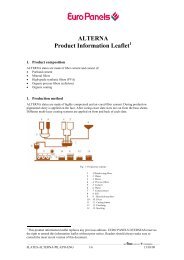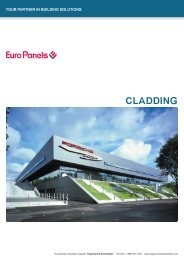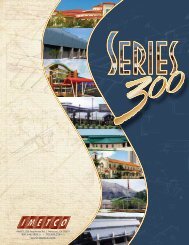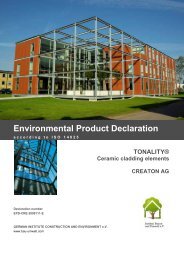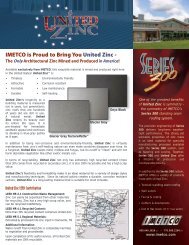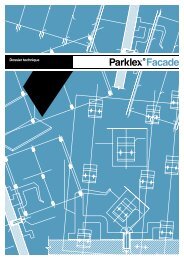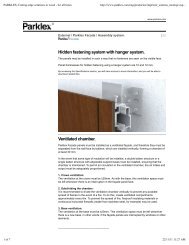Thermal Performance of Engineered Assemblies Thermal Clips
Thermal Performance of Engineered Assemblies Thermal Clips
Thermal Performance of Engineered Assemblies Thermal Clips
Create successful ePaper yourself
Turn your PDF publications into a flip-book with our unique Google optimized e-Paper software.
- 9 -ASHRAEClimateZoneNECBClimateZonesHeatingDegreeDays(HDD)ASHRAE90.1-2004Maximum Assembly U-ValueBTU/hr∙ft 2 ∙ o F (W/m 2 K)ASHRAE90.1-2007ASHRAE90.1-2010NECB-20114C 4 < 30000.084(0.477)0.064(0.363)0.064(0.363)0.055(0.315)5A, 5B and5C5 3000-40000.084(0.477)0.064(0.363)0.064(0.363)0.049(0.278)6A, 6B 6 4000-50000.084(0.477)0.064(0.363)0.064(0.363)0.044(0.247)77A 5000-60007B 6000-70000.064(0.363)0.064(0.363)0.064(0.363)0.064(0.363)0.064(0.363)0.064(0.363)0.037(0.210)0.037(0.210)8 8 >70000.064(0.363)0.064(0.363)0.064(0.363)0.032(0.183)ASHRAE 90.1 tends to be updated every 3 years. From this chart, it can be seen that thetrend from 2004-2007 was to decrease the maximum U-value. The decrease in U-valueappears to be based on increasing the amount <strong>of</strong> continuous exterior insulation. Adjustingthe building envelope prescriptive requirements does not happen with every cycle (2007-2010 did not see further decreases to U-value); however ASHRAE 90.1 may choose to doso in the future as other standards, such as NECB 2011, already have more stringentprescriptive requirements.Moving forward, to achieve realistic thermal performance goals, standards will need to beginto account for thermal bridging in details. Currently, many codes in Canada <strong>of</strong>fer exemptionsfor the thermal effects <strong>of</strong> details (such as slab edges) or their inclusion is <strong>of</strong>ten left tointerpretation by designers. For example, in the ASHRAE 90.1 performance path, slabedges can be ignored as long as they are less than 5% <strong>of</strong> the wall area. Depending on thedetail, these thermal bridges can have a major impact on the thermal performance <strong>of</strong> thebuilding envelope. With increased awareness <strong>of</strong> heat flow from/through details, standardswill likely move towards adding prescriptive and performance requirements to thoroughlydeal with thermal bridging.


